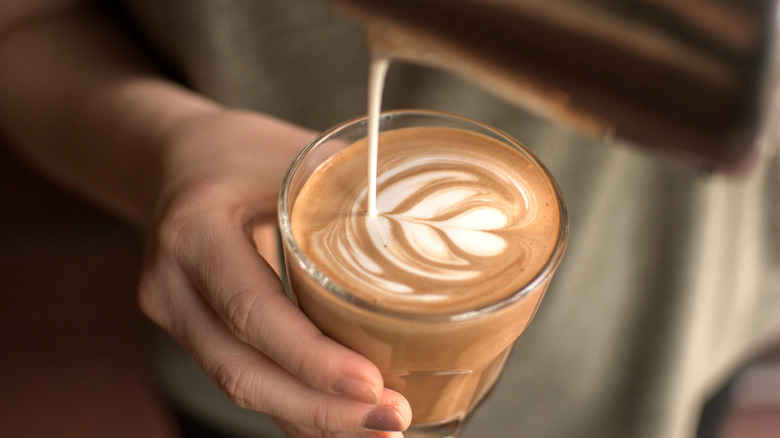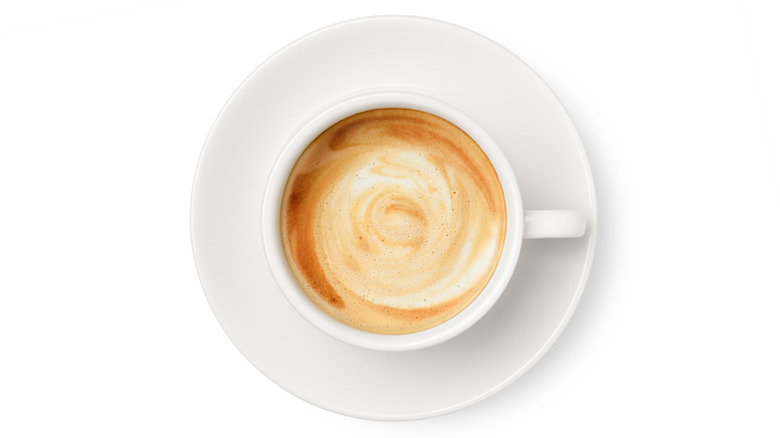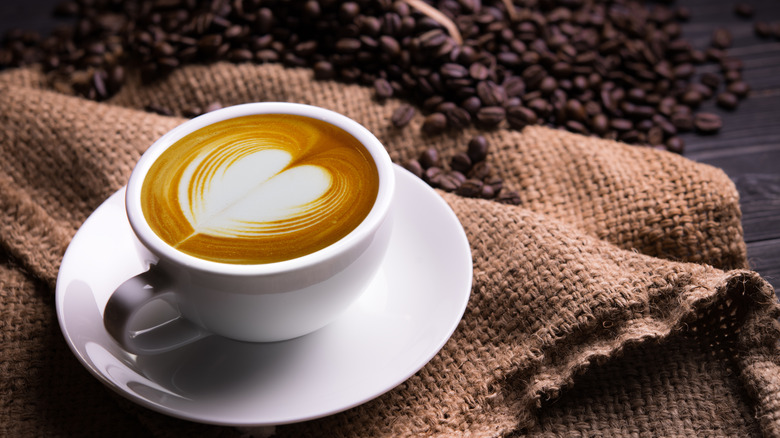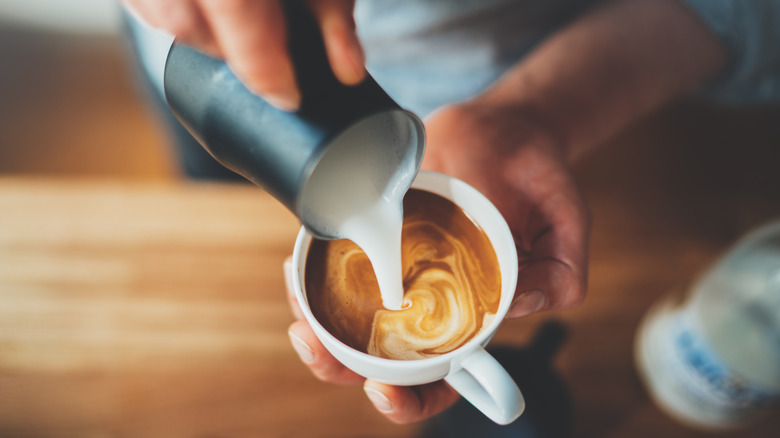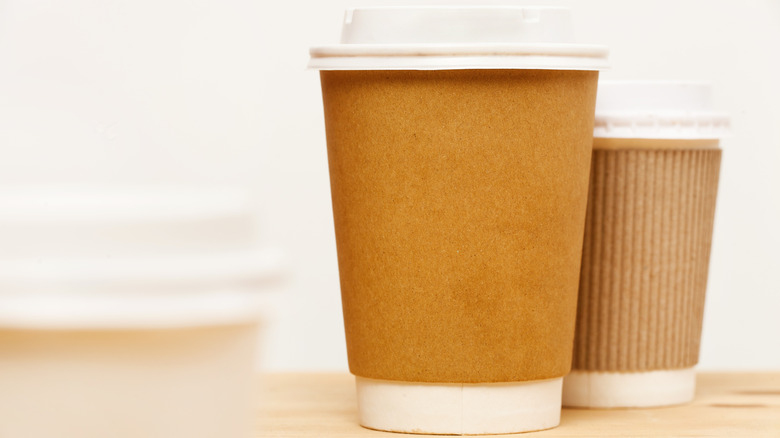Flat White Vs Latte: What's The Difference?
Unless you're a coffee connoisseur, it's hard to tell the difference between these caffeinated drinks. There's black coffee and coffee with milk, hot coffee, and cold. But apart from the basics, it's likely that most coffees seem to be much the same. After all, milk coffees are supposed to have milk in them so how different could they really be from each other? How then, is a flat white different from a latte?
While both flat whites and lattes are espresso-based drinks and have the same amount of espresso in them, a flat white is much smaller in size than a latte. In general, a latte is about 240 milliliters and a flat white around 160 milliliters, but the exact amount varies from country to country and café to café. However, a flat white isn't just a smaller latte. There are quite a few differences between the two coffees, but the most important one comes from the amount of milk added to the drinks.
What is a flat white?
Flat whites weren't a popular coffee drink in the United States until 2015, unless you had been in the world of specialty coffee for a while. But that changed when Starbucks introduced the flat white to coffee drinkers in the U.S. and Canada in early 2015. It became all the hype and a matter of great debate between Aussies and Kiwis, both claiming rights to having made the first flat white. It's been said that the flat white originated in Australia somewhere in the 1980s and then became popular in the UK. However, the New Zealand Herald points out that many coffee roasters in New Zealand claim Wellington, the capital of the country, to be the place where the version of flat white as we know it today was born.
Regardless of where it came from, a flat white is an espresso-based drink with either one or two shots of espresso and a thin layer of steamed milk. The thin or flat layer of steamed milk on top is called microfoam, and it has a more velvety texture than other milk-based coffees.
What is a latte?
Unlike the contentious origin of the flat white, the origin of latte or caffè latte is widely accepted to have been in Italy. However, the drink wasn't exactly meant for Italian coffee drinkers. It's been said that the caffè latte became a popular drink in areas of Italy that were frequented by American tourists. Caffè lattes were meant to be an alternative to cappuccinos for American tourists who found Italian cappuccinos to be too strong for their liking. As a consequence, a latte is a larger drink than both cappuccinos and flat whites and has a milder ratio of coffee to milk.
The Italian version of a caffè latte is a very milky breakfast coffee with a shot of espresso usually poured from a stovetop espresso maker. Outside Italy, a latte typically has a shot of espresso, steamed milk, and a layer of foamed milk sitting on top. Because it has more milk than espresso, the milk masks the acidic flavor from the coffee very well. Coffee Bros suggests that this is why lattes make an excellent drink for adding flavored syrups.
How is milk used in each?
Both a flat white and a latte use espresso as their source of caffeine, so the difference between the two beverages lies in the milk. A flat white only has a layer of microfoam on top of the espresso. A latte, on the other hand, has a more generous portion of steamed milk poured in, along with a layer of foamed milk on top.
When milk is frothed with a steam wand, it will have three layers — the warm liquid at the bottom, stiff froth with large bubbles at the top, and the dreamy microfoam in the middle. The other difference between a latte and a flat white is in how the milk is poured into the drinks. When making a latte, you want to hold back the layers of froth with a spoon, pour in the warm milk, and add only a spoonful of the foam on top. For a flat white, you only want the velvet microfoam in your espresso.
How does each taste?
A flat white has a higher ratio of coffee to milk, therefore a flat white is a much stronger espresso drink than a latte – almost like drinking a shot of sharp espresso straight up. But, while a flat white has all the intensity and the flavor of espresso, it has a richer and creamier mouthfeel because of the added microfoam. Because it has a lesser amount of milk in it than a latte, a flat white also allows you to taste the flavor profile of the coffee beans used to make the espresso, unlike a latte.
A flat white may also be preferred by coffee drinkers that want an espresso-based drink without all the foamed milk. A latte on the other hand has twice as much milk as most other espresso-based coffees that use milk and so they taste more milky and mellow.
Are the typical sizes different?
According to CRU Kafe, a latte usually is about 240 milliliters and a flat white about 160 milliliters. However, the size can vary depending on where you are and the café that you're in. Generally though, both a latte and a flat white have the same amount of espresso in them and that it's the proportion of milk that varies. In an interview with Perfect Daily Grind, Jonathan Prestidge, the Managing Director at Repack Espresso in the U.K. says that he usually serves flat whites in 5-ounce cups (142 milliliters) and lattes in 8-ounce cups (227 milliliters). He says that while a flat white could be as large as 6 ounces (170 milliliters), but any more and he would classify it as a latte.
Despite the fuss over the cup sizes when it comes to a flat white vs. a latte, there are other factors that differentiate the two coffees — the quantity of milk and how the milk is prepared and poured — that are of greater importance.
